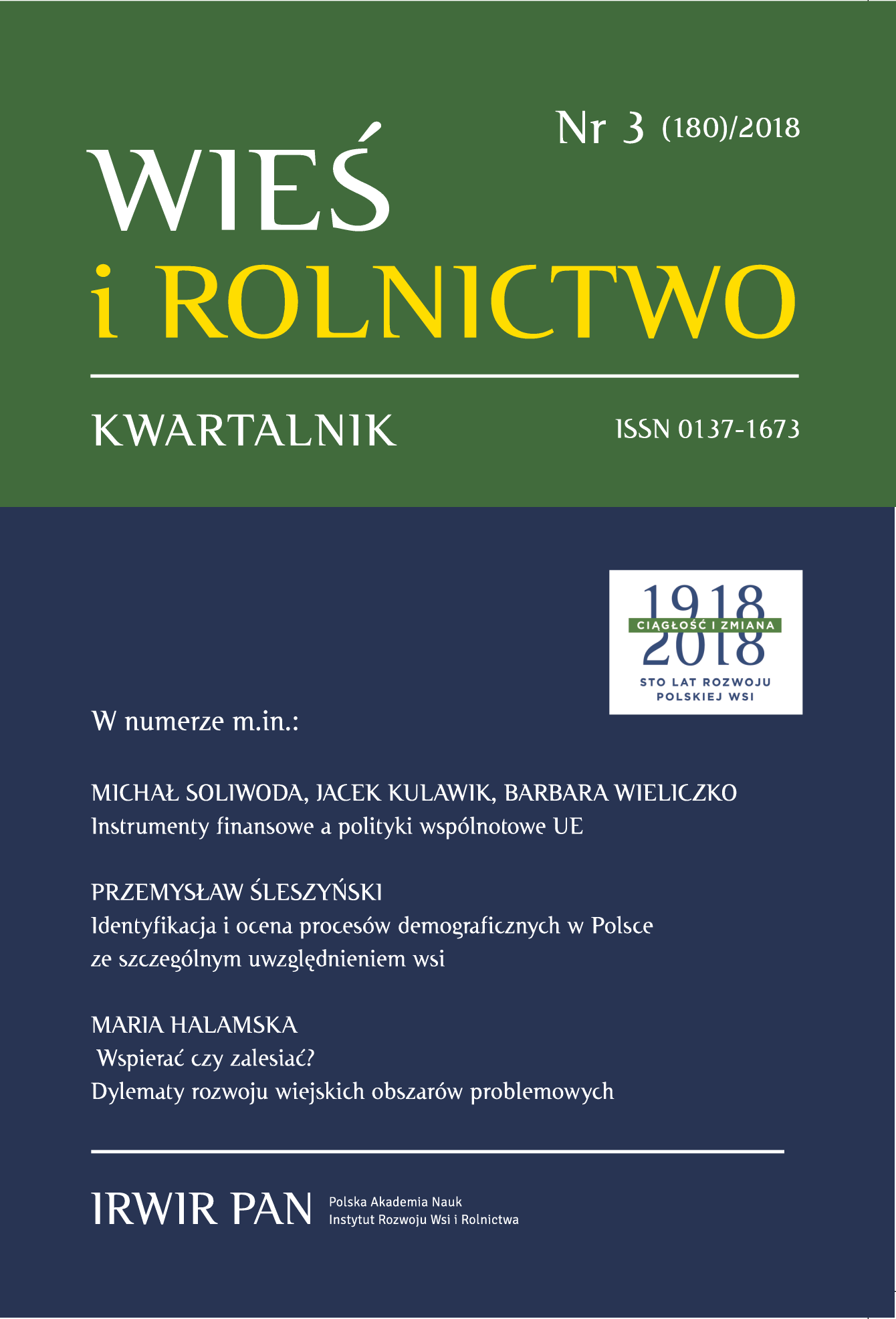Instrumenty finansowe a polityki wspólnotowe UE
Financial Instruments Versus Common EU Policies
Author(s): Michał Soliwoda, Jacek Kulawik, Barbara WieliczkoSubject(s): Supranational / Global Economy, Agriculture, Sociology, EU-Accession / EU-DEvelopment
Published by: Instytut Rozwoju Wsi i Rolnictwa Polskiej Akademii Nauk
Keywords: financial instruments; financial interventionism; preferential loan mechanism; Cohesion Policy; CAP; credit guarantees
Summary/Abstract: Abstract: Budgetary problems in the EU, resulting from increasingly complex geopolitical and socio-demographic conditions, can significantly prolong the work on the financial perspective after 2020. In this context, it is increasingly common to see that funding by subsidies should be reduced in the future to extend the use of repayable instruments. The main purpose of the article was to justify theoretical intervention, with a particular case of financial interventionism and preferential loan mechanisms. This problem has been addressed in cohesion policy, although adjustment to the common agricultural policy has also been indicated. The leading axis is the statement that the introduction of financial instruments into Community policies, including the CAP, should be based on sound theoretical assumptions, with reference to empirical research (even from the SME sector) which identify disadvantages, advantages, problems and threats. In general, our analysis shows that although the imperfections and incompleteness of financial markets are some justifications for a deliberate and temporary public intervention in shaping the supply of financial instruments, the estimates of demand for them are very uncertain and ranging unacceptably wide, which suggests a possibility for them to be overemphasized. A limited demand for these instruments results also from how they can be used. Last but not least, administrative and transactional costs can sometimes be very significant in their case, which can make them even less attractive than it is the case with fully commercial funding. There is also no certainty that financial instruments are going to become widely available to all farmers and rural residents.
Journal: Wieś i Rolnictwo
- Issue Year: 180/2018
- Issue No: 3
- Page Range: 9-33
- Page Count: 25
- Language: Polish

